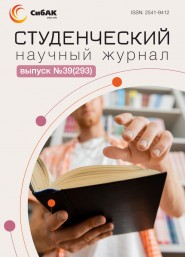Статья опубликована в рамках: Научного журнала «Студенческий» № 39(293)
Рубрика журнала: Физика
Скачать книгу(-и): скачать журнал часть 1, скачать журнал часть 2, скачать журнал часть 3, скачать журнал часть 4, скачать журнал часть 5, скачать журнал часть 6, скачать журнал часть 7, скачать журнал часть 8, скачать журнал часть 9
AI-DRIVEN RADIATION SAFETY AWARENESS PLATFORM
ABSTRACT
The article explores an innovative AI-driven Radiation Safety Awareness Platform, designed to enhance safety in environments involving radiation exposure, such as healthcare and industrial sectors. By integrating machine learning and natural language processing, the platform provides real-time monitoring, educational tools, and personalized recommendations. The study emphasizes the potential of AI in reducing radiation risks, optimizing operational efficiency, and improving adherence to international safety standards. The implications for Kazakhstan, with its legacy of nuclear testing and plans for nuclear energy development, highlight the relevance and urgency of this technological advancement.
Keywords: artificial intelligence; radiation safety; machine learning; healthcare.
INTRODUCTION
Radiation safety remains a critical concern in both healthcare and industrial sectors. Excessive or improper exposure to radiation can cause severe health problems, including cancer and genetic damage. Despite existing protocols, challenges such as human error persist. This article examines an AI-driven Radiation Safety Awareness Platform capable of addressing these issues by leveraging real-time data analysis and educational tools. The platform aligns with global safety standards such as the ALARA principle (As Low As Reasonably Achievable) [1, p. 35].
Kazakhstan’s unique history with nuclear testing and future energy strategies make this topic highly relevant. The proposed platform offers a timely solution for advancing safety measures while ensuring public and occupational health.
The legacy of the Semipalatinsk Test Site, where hundreds of nuclear tests were conducted, has resulted in radiation contamination that still affects the region. Health consequences include increased rates of cancer and genetic mutations. As Kazakhstan moves forward with its nuclear power ambitions, the necessity of advanced safety solutions becomes more evident. This platform can act as a bridge between past challenges and future aspirations, ensuring safety in all contexts involving radiation exposure [2, p. 49].
PLATFORM DESIGN AND FEATURES
The AI-driven Radiation Safety Awareness Platform includes the following components:
1. User Profiling: Personalizes content and recommendations based on user background and survey responses.
2. AI-Powered Learning Modules: Adaptive modules tailored to individual performance enhance knowledge retention.
3. Real-Time Monitoring and Alerts: Sensors and AI algorithms monitor radiation levels, sending immediate alerts when safety thresholds are breached.
4. Interactive Tools: ChatGPT serves as a virtual assistant, offering instant guidance and support during training sessions.
5. Dashboard Analytics: Tracks user progress and identifies areas for improvement.
ETHICAL CONSIDERATIONS
The integration of AI into radiation safety raises ethical issues, particularly regarding data privacy, algorithmic bias, and transparency. These concerns must be addressed to ensure equitable and reliable implementation. For instance, machine learning algorithms must undergo rigorous testing to validate their recommendations, and user data should be encrypted to protect privacy.
Additionally, the platform adheres to ethical guidelines by prioritizing transparency in decision-making processes and ensuring accessibility for diverse user groups [3, p. 112].
IMPACT AND RELEVANCE
The platform is particularly significant for Kazakhstan as it prepares to operationalize its first nuclear power plant. The integration of AI technologies can mitigate risks, optimize radiation usage, and ensure compliance with WHO and IAEA guidelines. For healthcare professionals, this means reduced exposure during diagnostic imaging and radiation therapy procedures.
CONCLUSION
This AI-driven platform is an innovative step toward improving radiation safety. It combines monitoring, education, and decision-support tools to address both current and future challenges in radiation-heavy environments. The technology holds transformative potential, not only for Kazakhstan but globally.
References:
- Andresz, S., et al. Artificial intelligence and radiation protection: A game changer or an update? Radio protection, 2023. 57(2), 157-164.
- International Atomic Energy Agency (IAEA). Radiation protection and safety of radiation sources: International basic safety standards. 2020
- McEntee, M. AI in radiation protection: A potential game changer. Healthcare in Europe. 2022


Оставить комментарий